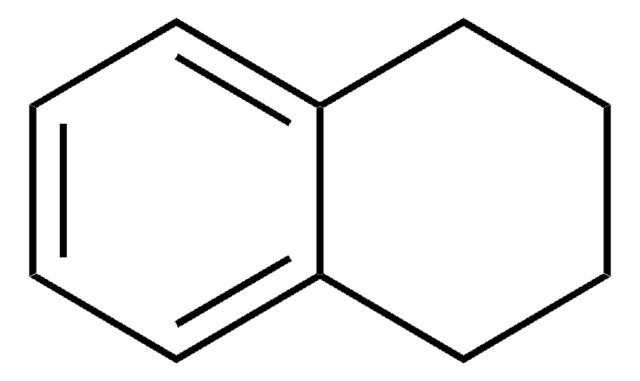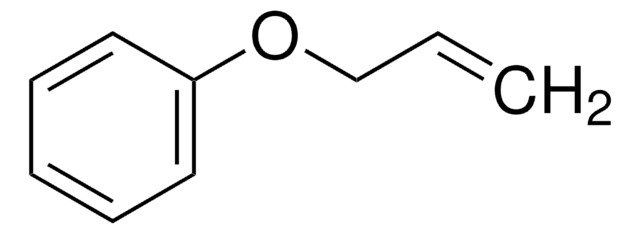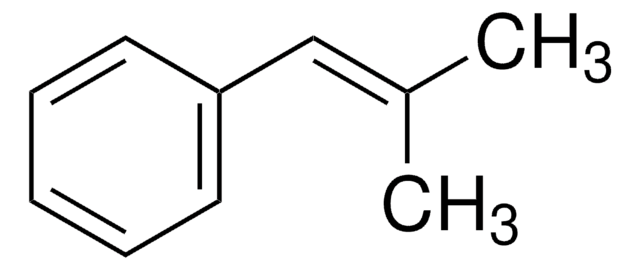추천 제품
분석
99%
refractive index
n20/D 1.507 (lit.)
bp
175-177 °C (lit.)
density
0.88 g/mL at 25 °C (lit.)
SMILES string
C=CCCc1ccccc1
InChI
1S/C10H12/c1-2-3-7-10-8-5-4-6-9-10/h2,4-6,8-9H,1,3,7H2
InChI key
PBGVMIDTGGTBFS-UHFFFAOYSA-N
애플리케이션
4-Phenyl-1-butene can be used as a monomer precursor to synthesize poly(4-phenyl-1-butene) via heterogeneous catalytic-polymerization reaction. It is also utilized to make olefinic copolymers with different substrates, such as 11-bromo-1-undecene, ethylene, and vinylpyrrolidone, etc., for a variety of polymer applications.
It can also be used as a reactant to synthesize:
It can also be used as a reactant to synthesize:
- (3-Chlorobutyl)benzene via cobalt catalyzed hydrochlorination reaction.
- Naphthalene by Cu-Pt alloy catalyzed dehydrocyclization reaction.
신호어
Warning
유해 및 위험 성명서
Hazard Classifications
Aquatic Chronic 2 - Flam. Liq. 3 - Skin Irrit. 2
Storage Class Code
3 - Flammable liquids
WGK
WGK 2
Flash Point (°F)
140.0 °F - closed cup
Flash Point (°C)
60 °C - closed cup
개인 보호 장비
Eyeshields, Gloves, type ABEK (EN14387) respirator filter
이미 열람한 고객
Synthesis of (3-Chlorobutyl) benzene by the Cobalt-Catalyzed Hydrochlorination of 4-Phenyl-1-Butene
Gaspar Boris, et al.
Organic Syntheses, 87, 88-94 (2003)
Naphthalene formation on Cu3Pt (111): dehydrocyclization of 4-phenyl-1-butene
Mathauser AT and Teplyakov AV
Catalysis Letters, 73(2), 207-210 (2001)
자사의 과학자팀은 생명 과학, 재료 과학, 화학 합성, 크로마토그래피, 분석 및 기타 많은 영역을 포함한 모든 과학 분야에 경험이 있습니다..
고객지원팀으로 연락바랍니다.










